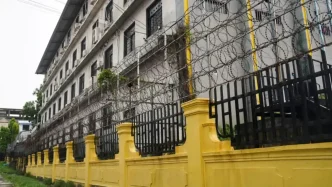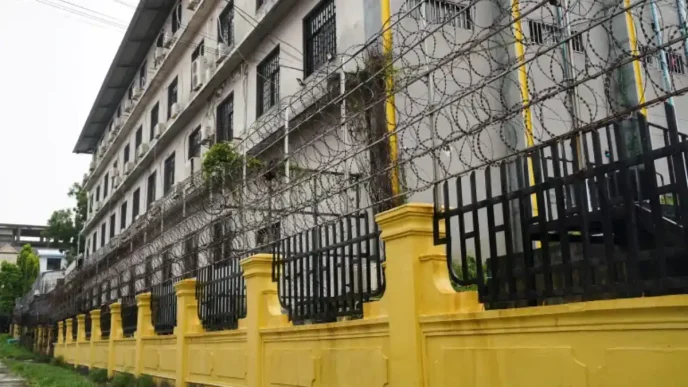In a significant step toward strengthening bilateral relations, Vietnam’s Party General Secretary To Lam met with US Ambassador to Vietnam Marc Knapper in Hanoi on March 31, reaffirming the Southeast Asian nation’s commitment to viewing the United States as a top strategic partner. The meeting underscored a mutual desire to deepen ties across economic, political, and cultural spheres, reflecting both countries’ ambitions for stability and cooperation in a geopolitically sensitive region.
A Comprehensive Strategic Partnership
The encounter between To Lam and Ambassador Knapper highlighted the steady progress in Vietnam-US relations, a partnership elevated to a comprehensive strategic level in recent years. To Lam emphasized the importance of implementing high-level agreements and action plans that prioritize political trust and all-around cooperation. “Vietnam consistently regards the US as a top strategic partner and hopes for close cooperation to deepen bilateral relations in a substantive manner” he stated during the meeting, as reported by Vietnam News.
This partnership, formalized through joint statements, focuses on shared interests, including peace, sustainable development, and regional stability. To Lam praised the efforts of Knapper and the US Embassy in Hanoi for their role in advancing these initiatives, noting specific strides in high-level engagements that have bolstered mutual understanding. The Vietnamese leader also pointed to active efforts by relevant ministries and agencies to address US concerns, signaling a pragmatic approach to maintaining balanced relations.
Economic Ties at the Forefront
Economic cooperation emerged as a cornerstone of the discussions, with both sides acknowledging the steady growth in trade and investment. To Lam reiterated Vietnam’s commitment to fostering a favorable environment for foreign enterprises, including US firms, to expand their presence in the country. He highlighted Vietnam’s interest in importing US products such as agricultural goods, liquefied natural gas, and high-tech equipment, aiming for a sustainable and balanced economic relationship.
Ambassador Knapper echoed this sentiment, affirming that US businesses view Vietnam as a critical partner in the global supply chain. “The Vietnamese market is creating many opportunities for US products and services” he noted, underscoring the potential for deeper economic integration. He also expressed appreciation for Vietnam’s practical measures to promote harmonious trade, suggesting that both nations stand to gain from closer collaboration. While specific trade figures were not discussed during the meeting, the emphasis on sustainability and mutual benefit points to a long-term vision for economic ties.
Navigating Regional and Global Roles
Beyond bilateral concerns, the meeting touched on Vietnam’s broader foreign policy of independence and self-reliance, a stance that Knapper described as a positive force for regional peace. “A strong, independent, prosperous, and resilient Vietnam” is how the ambassador characterized the country’s growing influence, aligning US support with Vietnam’s aspirations on the global stage. This rhetoric reflects a shared interest in counterbalancing regional tensions, particularly in the South China Sea, where Vietnam plays a pivotal role amid competing territorial claims.
While neither side explicitly mentioned specific geopolitical challenges during the reported discussions, the focus on Vietnam’s role in promoting peace and cooperation suggests an unspoken alignment on issues of regional security. The US has long supported Vietnam’s efforts to maintain sovereignty and stability, a dynamic that could shape future defense and security cooperation under the comprehensive strategic partnership. Knapper’s pledge to promote coordination between US agencies and Vietnam on priority areas like defense and combating transnational crime further hints at a multifaceted collaboration.
Addressing Bilateral Concerns
To Lam assured Knapper that Vietnam is actively addressing current US concerns, though specifics were not disclosed in public statements. This commitment to dialogue and resolution is a hallmark of the evolving relationship, which has seen its share of challenges, including trade imbalances and differing perspectives on human rights. The Vietnamese leader’s emphasis on creating favorable conditions for US investment signals a willingness to bridge gaps through economic engagement, a strategy that has historically helped ease tensions between the two nations.
Knapper, in turn, expressed gratitude for the Vietnamese leadership’s efforts, noting that the interest and support from Party and State leaders have been a significant motivator for advancing relations. His comments suggest a recognition of Vietnam’s internal complexities and a diplomatic approach to fostering trust. This mutual acknowledgment of each other’s efforts lays the groundwork for addressing more contentious issues in a constructive manner, though the pace and scope of progress remain to be seen.
Looking Beyond Economics: Cultural and Educational Ties
While economic and political cooperation dominated the conversation, the meeting also reflected a broader vision for Vietnam-US relations. To Lam highlighted the importance of cultural and educational exchanges as part of the comprehensive partnership, areas where both nations have seen growing collaboration. Knapper’s commitment to expanding cooperation in education and training aligns with initiatives to strengthen long-term ties, such as partnerships between Vietnamese and US universities.
These softer aspects of diplomacy, often overshadowed by trade and security discussions, are critical for building people-to-people connections. Vietnam’s young, dynamic population stands to benefit from increased access to US educational resources, while American institutions gain from engaging with a region of growing global importance. Though not the focus of this particular meeting, such initiatives are likely to play a supporting role in sustaining the momentum of bilateral relations over the coming years.
Challenges and Opportunities Ahead
Despite the positive tone of the meeting, Vietnam and the US face a complex landscape in deepening their partnership. Economic ties, while robust, must navigate potential trade disputes and differing regulatory frameworks. Vietnam’s rapid development as a manufacturing hub has drawn US interest, but it also raises questions about labor standards and environmental impacts—issues that could shape future negotiations. If unaddressed, these concerns may temper the optimism expressed by both To Lam and Knapper, though no evidence currently suggests immediate friction.
On the geopolitical front, Vietnam’s balancing act between major powers remains a delicate endeavor. While the US partnership offers strategic advantages, Vietnam must also manage relations with other influential players in the region. The emphasis on independence in its foreign policy, as noted by Knapper, underscores Vietnam’s intent to chart its own course, a stance that could complicate alignment on certain international issues. Analysts suggest that high-level engagements, such as those prioritized in the comprehensive partnership, will be crucial for navigating these dynamics.
Moreover, domestic considerations in both countries could influence the trajectory of relations. In Vietnam, economic reforms and anti-corruption drives under To Lam’s leadership may impact how foreign investment is perceived and managed. In the US, shifts in political priorities or policy directions could affect the consistency of support for Vietnam’s regional ambitions. While these factors were not discussed during the March 31 meeting, they form the broader context in which this strategic partnership operates.
A Forward-Looking Partnership
The meeting between To Lam and Knapper marks a moment of reflection and ambition for Vietnam-US relations. Both leaders articulated a vision of cooperation that transcends immediate economic gains, aiming for a partnership that contributes to regional and global stability. The commitment to high-level engagements and substantive collaboration across multiple domains—economics, security, education—suggests a relationship poised for further growth.
As Vietnam continues to assert its role in Southeast Asia, questions remain about how this partnership will evolve amid shifting global currents. Will economic ties translate into broader strategic alignment, or will underlying differences temper progress? For now, the mutual goodwill expressed in Hanoi offers a promising foundation, one that both nations appear eager to build upon in the months and years ahead.














